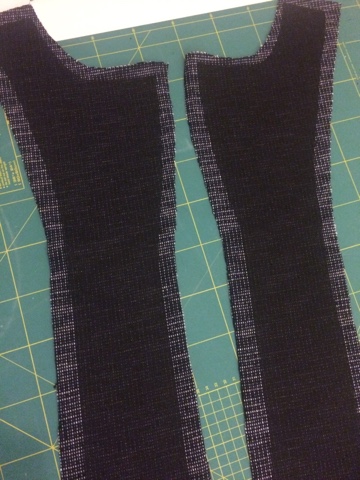Hope you all had a lovely Christmas if you celebrate it. If not hope you had a lovely weekend.
I finished my dress before Christmas and wore it to the Christmas dinner with my family. It was a rather quick project. A friend mentioned a Downton Abbey vibe to it and though I can see it I think (hope) it’s a bit more modern.
The pattern is from BurdaStyle January 2016, nr 117. Mine looks pretty much like the photo for once, as I made it from a dark navy fabric. Don’t remember where I bought it and think it’s a cotton/linen blend with perhaps some silk in it, as it has a lovely shine. A bit cool for a winter dress (I wore it with a shawl for dinner), but I found out that most fabrics in my fabric collection are not dress length, certainly not when the dress has a flared skirt and sleeves. And one of my goals for the next few months is also to use more of the fabrics I have. Not committing to anything, just thinking that as I have some really nice pieces it might be good to use them.
The sleeves are cut on the bias and are comfortable in wearing. I do remember reading somewhere that there might be a problem with sleeves cut on the bias, but for this fabric/pattern it was no problem.
The pleats are a separate pattern piece that is cut off-grain. This helps the pleats to curve around the body.
All I changed to the pattern was adding 7-8 centimeters to the center front and adding 3 cm to the length of the bodice, which is what I usually do with Burda patterns. I checked the pattern pieces to my sloper and it was quite close to that.
Two pictures of me wearing the dress. These were intended as trial ones but the camera battery went down and I don’t feel like doing it again later.
A few dressform pictures of details.
Have a lovely new year’s evening all and a joyful start in the new year. Till next year!






















































